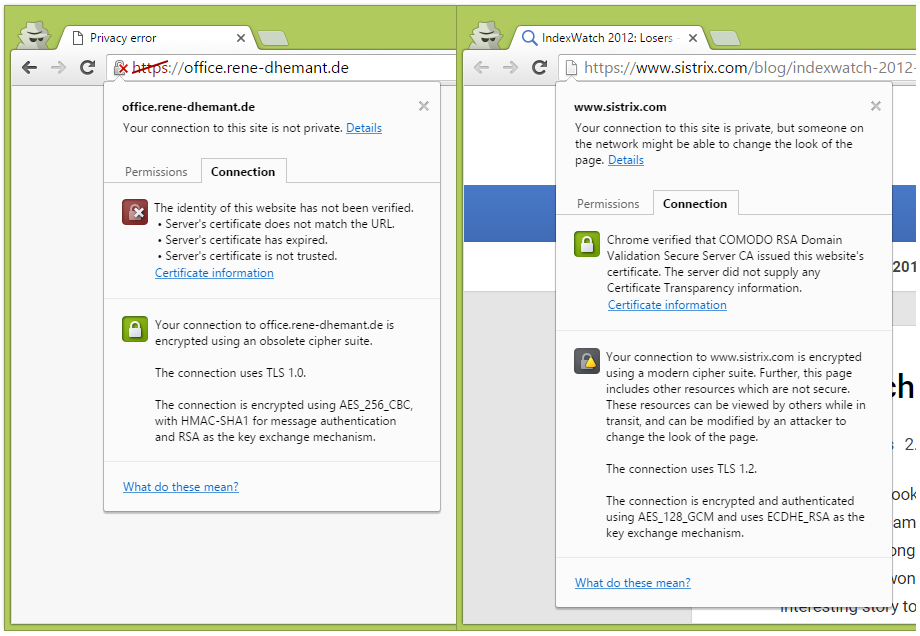
Ignore the "The certificate is valid" with a green checkmark the certificate is "valid" in the sense that it is well-formed, but it is invalid in the sense that it was not signed by a trusted certificate authority and is issued for a mismatched domain name (Zoom really should not report self-signed certificates as "valid. You can see the issuer is Arris, who is the manufacturer of my modem. Most modern apps are programmed to handle these mismatches and prevent you from continuing to use the connection.įor example, here is Zoom's warning window that shows the self-signed certificate, its domain name (called a common name in certificate parlance), and who it was issued by. This is for security reasons because sometimes malicious actors can man-in-the-middle a connection attempt between your client device and a server and attempt to provide a fake certificate. These warnings differ from app to app, but they almost always prevent any further activity on the connection. This results in scary warnings, popups, etc. Not only is the certificate not trusted, but it's also issued for the domain name dsldevice.domain_not_set.invalid, which, of course, doesn't match the domain name your client device is attempting to connect to. Instead of not responding at all, which I argue is the more secure option, the Arris modem responds with a so-called "self-signed" certificate-named this way because the certificate was not issued by a trusted certificate authority like the real certificate. Your problem arose because the AT&T modem, often a brand like Arris, detects that there is no internet connection and intercepts these outgoing HTTPS connection attempts. Because the certificate is trusted and its domain name matches the domain name you are attempting to connect to, the browser allows the connection. For example, when your internet connection is working, connecting a browser to will result in the server presenting a certificate for att.com, which is both trusted by a so-called "trusted certificate authority" and is also issued for att.com. The certificate will be issued for the domain name your computer is trying to access. Part of this negotiation is the server presenting the app with a certificate. Could a continue anyway feature come for DDG Pretty much like all other browsers already have. I frequently need to access my website and cannot do it on the iOS DDG app. Is there anyway to ignore this error, and continue It seems the remote certificate is not signed. > : The remote certificate is invalid according to the validation procedure. Someone else already asked about this here, but there was no answer. Could not establish trust relationship for the SSL/TLS secure channel. This protocol requires that your client device (PC, phone, etc.) and the remote server negotiate a secure, encrypted connection. There seems to be no way to access a website with an invalid (or in my case, self-hosted) certificate. Various apps like browsers and Zoom use a protocol known as HTTPS.

Once your internet connection comes back, the modem will no longer perform this behavior. Your internet connection is down and your modem is hijacking outgoing HTTPS connections. TL DR: There is nothing wrong with your equipment or its settings. Hopefully I can help educate the folks on this thread. I'm a software developer, including web development, of 20+ years who is used to seeing these kinds of things. Using (Stream receiveStream = response.So much terrible advice in this thread, including by AT&T. Using (HttpWebResponse response = (HttpWebResponse)request.GetResponse()) Request.Credentials = CredentialCache.DefaultCredentials HttpWebRequest request = (HttpWebRequest)WebRequest.Create(urlCommand) ServicePointManager.ServerCertificateValidationCallback += new ((s, ce, ch, ssl) => true) Here is my latest attempt (which does not work): XmlDocument xml = new XmlDocument() In case it makes any difference, my code is in a class library and I am testing via a console app.

One I tried here on SO looked good but didn't seem to work, I added the 'accepted answer' line of code directly before my code above as it wasn't too clear as where it should go.

Now I have done my Google-ing and tried a number of promising solutions but it seems to be of no help. The request was aborted: Could not create SSL/TLS secure channel. With the site having an invalid SSL certificate I am now getting the following error: XmlTextReader reader = new XmlTextReader("") Here is the initial code I had, which I have used before may times to get what I want from a standard http (non SSL) request: XmlDocument xml = new XmlDocument() I want my application to not care about the certificate, I want it to live it's life on the edge without fear! I am trying to create an XML document from an https web request, but I am having trouble getting it to work when the site has an invalid certificate.


 0 kommentar(er)
0 kommentar(er)
